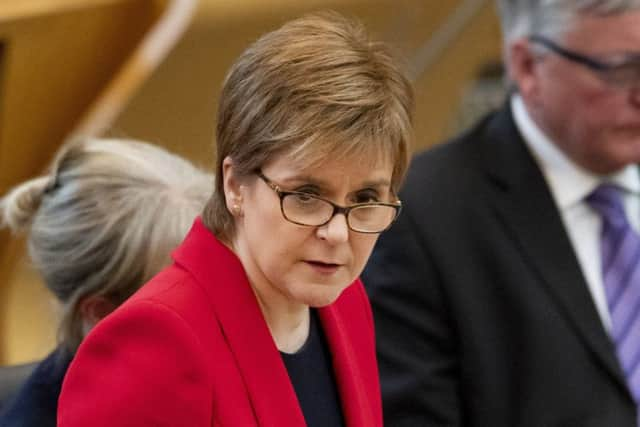Nicola Sturgeon accused of constant education cuts
The number of pupils in primary school has risen by 9.5 per cent in the past eight years, but education spending has fallen by 3.8 per cent in real terms over the same period, putting growing pressure on local authorities and schools.
The figures have been revealed amid rising concern about whether schools are giving pupils basic reading and writing skills, a shortage in qualified teachers and reports that teachers are paying out of their own pockets for basic supplies for their classes.
Advertisement
Hide AdAdvertisement
Hide AdSchools in Edinburgh have been forced to ask parents and university students to help take classes in the past year. Parents in Moray were warned by the council that some schools may have to cut teaching hours due to staffing problems.


The number of children being taught in primary school classes with more than 30 pupils is now 44,000 – a 40 per cent increase since 2011.
And school leaders have warned that a lack of resources to deal with the growing demand for additional support in classrooms risks damaging efforts to close the attainment gap between the wealthiest and poorest pupils.
Last year’s Scottish Survey of Literacy and Numeracy (SSLN) revealed less than half (49 per cent) of S2 pupils performed well at writing in 2016 – a fall from 64 per cent in 2012.
The proportion of S2 children who were unable to write to the minimum standard rose from 7 per cent to 16 per cent, according to last year’s SSLN, which is no longer being conducted by education authorities. Scotland has also continued to slip down the Pisa global educational attainment rankings in mathematics, science and literacy.
Teachers have meanwhile rejected an offer of a 3 per cent pay rise as “unacceptable” and have threatened a national strike unless pay and conditions are “substantially improved”.
Teaching unions estimate pay restraint over the past decade has eroded wages for teachers by 13 per cent and have called for a 10 per cent pay increase.
Labour education spokesman Iain Gray MSP said the fall in spending was having a “direct impact on our children’s education.
Advertisement
Hide AdAdvertisement
Hide Ad“These figures show categorically that the SNP has failed a generation of pupils.”
“Pupils starting in 2010 will have faced constant cuts, year after year, during their entire educational experience.”
Mr Gray added: “In Scotland, we face a stubborn attainment gap and have a teacher recruitment crisis of the SNP’s making.
“What our schools need is not divisive reforms, but a government willing to make the investment in our local authorities, so we can build an education system that works for the many, not the few.”
In 2015, First Minister Nicola Sturgeon said “I want to be judged” on her record on closing the education attainment gap between rich and poor. She appointed John Swinney to take charge of the troubled brief after the last Holyrood election.
The Scottish Government said the trend in schools spending had been reversed, with local authority spending on education growing from £4.95 billion in 2015-16 to £5.07bn in 2016-17 – a real terms increase of 0.3 per cent.
A spokesman said: “We are committing £750 million during the course of this parliament to tackle the poverty- related attainment gap and ensure every child in Scotland has an equal chance to succeed, including another £120m pupil equity funding direct to schools this year.
“This investment is supported by our reforms to education designed to empower teachers and put schools in charge of key decisions about a child’s education. Additionally teacher numbers are increasing.”
